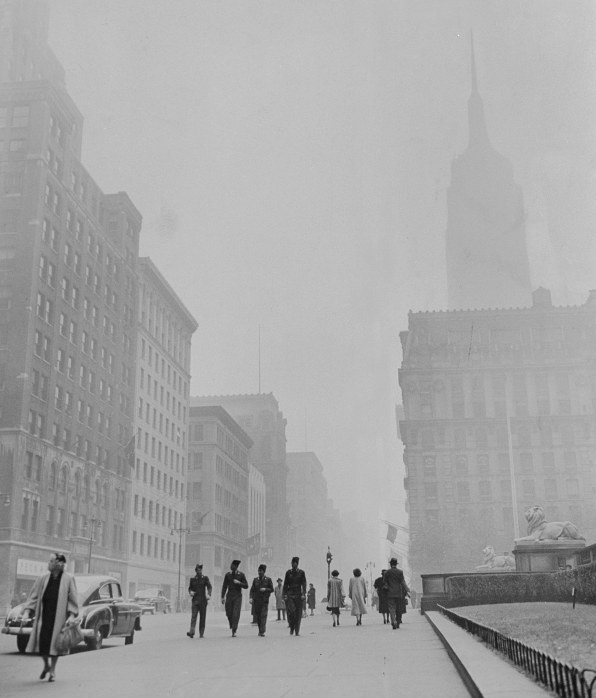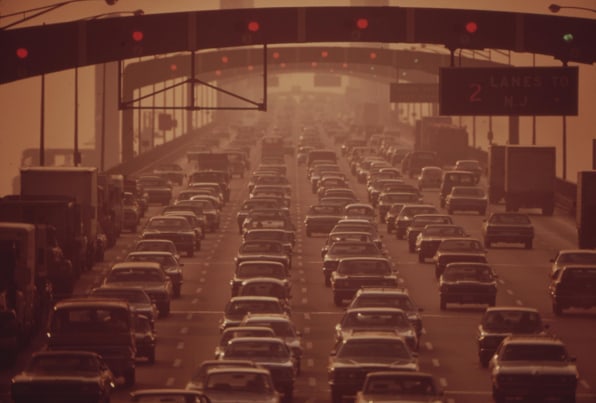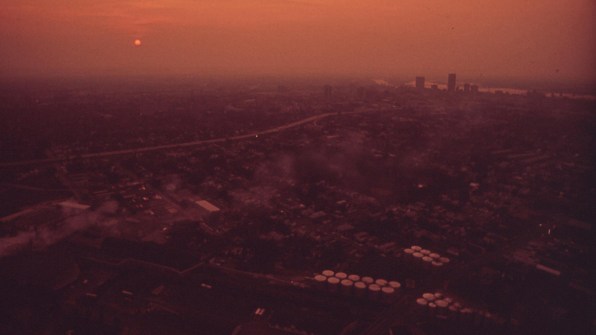In the News
June 19, 2023

June 19, 2023
In the 1950s, a toxic shroud of pollution settled over New York City for six days as a shift in the weather trapped emissions from local coal power plants, factories, and cars. Some people called it “smaze,” a portmanteau of smoke and haze; the word smog hadn’t been fully popularized yet. After pollution levels spiked, dozens of people died. The same thing happened in 1963 and 1966.

At the time of the 1966 event, the city had a single air quality monitoring station in Harlem, and only a crude version of an air quality index that combined different pollutants into a single number, which the city used to decide when to issue warnings. But the city’s dismal air quality was one of the factors that helped lead to the creation of the Clean Air Act, the Environmental Protection Agency, and, later, the color-coded version of the EPA’s Air Quality Index that exists today.
“There were lots of days when the air looked as polluted as we saw last week [with the Canadian wildfire smoke],” says David Hawkins, now a senior attorney at the environmental nonprofit National Resources Defense Council, who was a law student at Columbia University in the mid-1960s.

Even on an average day, pollution levels were high. “You had apartment building incinerators that were essentially burning trash uncontrolled,” he says. “You had a lot of building furnaces that were being heated with coal or very dirty oil. You had power plants that were largely uncontrolled. You had automobiles, trucks, and buses that were completely uncontrolled. The air quality was very bad. We lived in an apartment building where you could open the window and wipe the windowsill clean in the morning, and by the evening it would be dark gray.”

Other cities, like St. Louis, Chicago, Pittsburgh, and Los Angeles, also had bad air quality and experienced spikes of severe pollution. “Those episodes led to increasing activity at the city level,” Hawkins says. “And then city politicians basically realized that they needed to have more backup in order to be able to actually succeed in cleaning up some of these big polluting facilities. So they started agitating with the state governors, and then the state governors started agitating with the federal government.”
…
While some air pollution is obvious, like wildfire smoke, the Air Quality Index can also make people more aware of pollution that’s invisible. “Ninety-nine percent of the air pollutants, by weight, are gaseous pollutants, so most of those are not detectable,” says Jonathan Deason, an engineering professor at George Washington University.
He says the EPA could potentially add other features to make the data hit harder; for example, an index from the University of Chicago converts air pollution data into life expectancy. In some cities in India, cleaner air could mean living eight years longer. In parts of California, cleaner air could mean living six months longer. Still, the Clean Air Act has already been very successful in the U.S.: Since the EPA launched in 1970, combined levels of the six most common air pollutants have dropped 78%. The filthy skies that were common half a century ago have largely disappeared, despite efforts to weaken the EPA’s power.